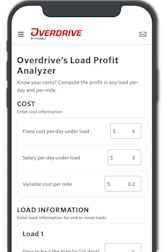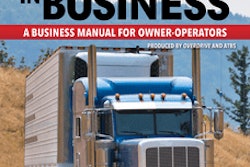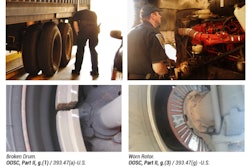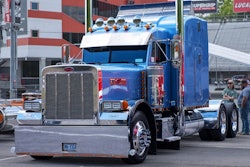The U.S. Environmental Protection Agency is proposing to partially halt California’s State Implementation Plan (SIP) relating to emissions controls for non-gasoline-combustion vehicles over 14,000 pounds.
- Federal regulators see California's colloquially-known "smog check" rule as potentially inapplicable to out of state-registered trucks.
- Implementation of the rule could violate the Commerce Clause of the U.S. Constitution.
- Truck owners have been required to conduct emissions tests and pay a $30 compliance fee since 2023.
- Regulators opened a comment period for input on constitutionality of the "smog check" implementation.
EPA is considering to specifically disapprove of California’s “Heavy-Duty Inspection and Maintenance Regulation (HD I/M),” more commonly known as the Clean Truck Check program, to the extent that it applies to vehicles registered out-of-state or out-of-country.
The EPA said it “has substantial concerns” about California's assurances under the Clean Air Act that the implementation of the out-of-state provisions of the regulation are not prohibited by federal law.
“California was not, and has never been, duly elected by the American people to run our great country,” said EPA Administrator Lee Zeldin in a press release. “The state’s power grab knows no bounds. EPA will not allow California to violate federal law, and we will not sit idly by while, in the name of climate change, they raise the cost of living on all Americans who rely on truck drivers and the products they deliver across the country.”
CARB’s Clean Truck Check program requires heavy-duty vehicles operating in the state to undergo inspections to ensure that emissions control systems maintain the same efficiency as the vehicle ages.

[Related: California puts teeth in emission regs with new 'smog check' system]
Vehicles equipped with on-board diagnostic (OBD) systems can be tested using OBD data, while older non-OBD vehicles are subject to smoke opacity and visual inspections. Vehicle owners are required to have a valid HD I/M compliance certificate with the vehicle while operating in California, which they must present to a CARB inspector and/or California Highway Patrol officer upon request.
The regulation also requires a compliance fee that started out at $30 a year but is tied to California’s Consumer Price Index. The fee for 2025 is $31.18, applicable to both in- and out-of-state vehicles.
The EPA said the regulation’s applicability to non-California-domiciled vehicles could be prohibited by the U.S. Constitution’s Commerce Clause. “The impact of California’s HD/IM Regulation on vehicles registered out of state and on interstate shipping is undoubtably significant,” EPA said. “The HD I/M Regulation adds significant costs to operation of heavy-duty vehicles in California.”
[Related: CARB approves ‘smog check’ regulation for trucks operating in California]
The agency cited a CARB staff report that placed the cost of the HD I/M regulation at $4.12 billion between 2023 and 2050, with a maximum annual cost of $350 million in 2024, largely due to costs related to vehicle testing, repair, and compliance fees. CARB also estimated the total direct costs on a typical California fleet (seven vehicles) to be $772 to $2,180 annually, EPA noted.
The estimated cost for an owner-operator/single-vehicle fleet was pegged at $225 to $701 annually.
The EPA said its concern is that approving the regulation “would delegate to California the ability to enforce the State’s I/M requirements throughout the nation to the extent a vehicle passes through or operates within the State for almost any length of time. As a result, an approval would effectively force regulated entities in other States to comply with California’s HD I/M requirements, rather than the applicable requirements in their respective States, including requirements approved by the EPA pursuant to the [Clean Air Act].”
The agency also raised concerns that the regulation would also infringe on the foreign relation powers vested exclusively to the federal government by the Constitution, as it would apply to vehicles registered in Mexico and Canada that pass through California.
While proposing to partially disapprove of California’s HD I/M regulation to the extent that it applies to non-California-based entities, the agency acknowledged that the extraterritorial reach of the regulation is unusual in the context of an SIP, a "State Implementation Plan." The EPA’s response would be the first instance in which the agency has disapproved an SIP on this basis.
As such, EPA is seeking public comment on the proposal, including whether extraterritorial application of California’s regulation would be prohibited by federal law, as well as on any ways in which federal enforcement of California’s HD I/M regulation could conflict with approved SIPs from other states.
Alternatively, EPA proposes to approve the SIP in full if it receives comments that “California’s SIP submission sufficiently demonstrates that implementation of the HD I/M Regulation would not be prohibited by Federal or State law.”
Comments can be filed here through Sept. 25.
[Related: EPA set to unravel 'disastrous' federal trucking emissions regulations]











